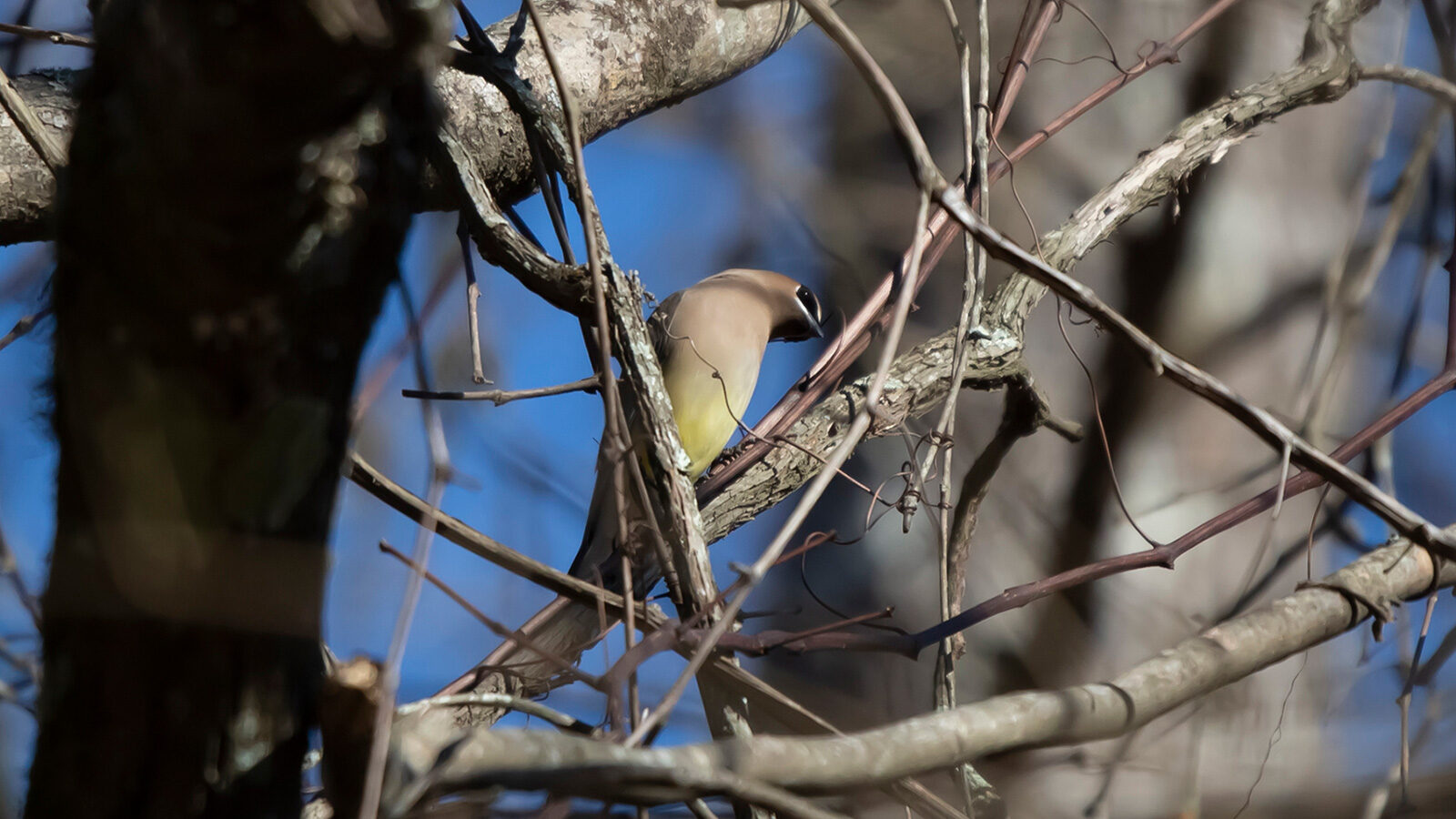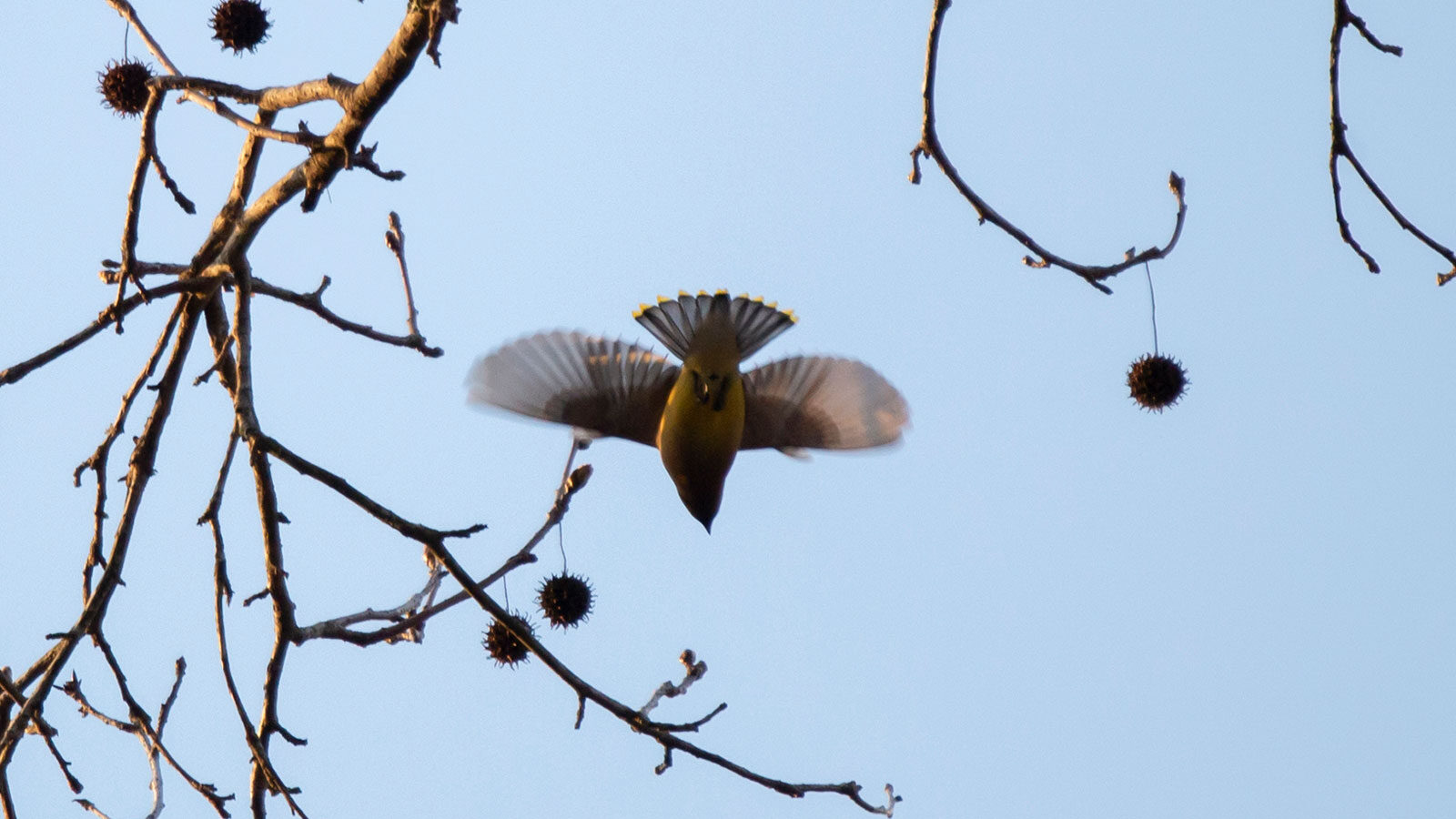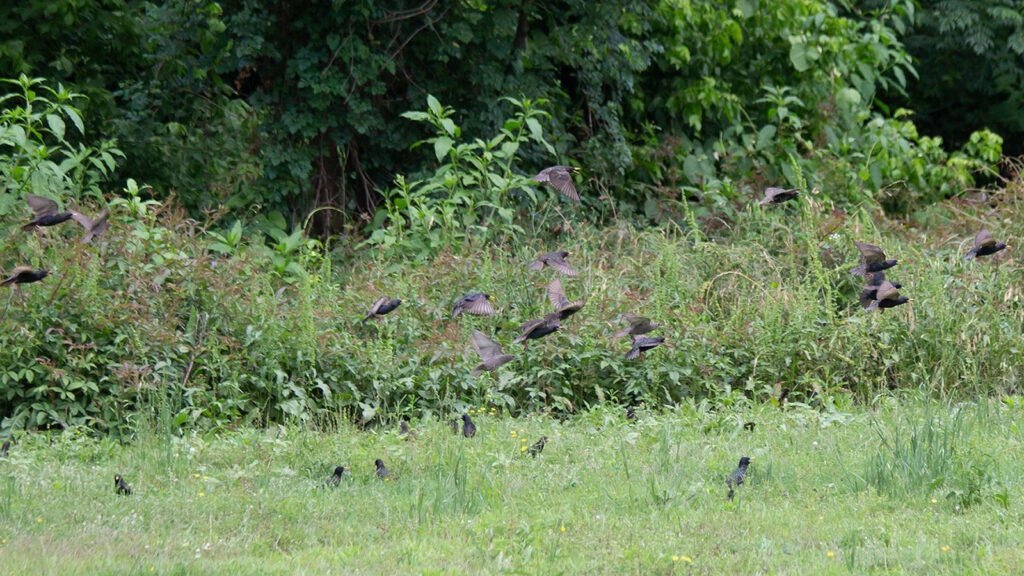
Did you know that cedar waxwings get intoxicated on fermented berries?
Cedar Waxwings
at
a Glance

Key Features:
Cedar waxwings are gray birds with brown chests, brown heads, yellow bellies, yellow tail tips, and black masks outlined by white.
Least Concern - Population Increasing
Habitat:
Forests, fields, and grasslands
nesting habits:
Cedar waxwings build cup-shaped nests in the lower half of trees or vine tangles out of blossoms, down, grass, hickory catkins, horsehair, roots, and twigs.
seasons cedar waxwings are active in our area:
Winter
Diet:
Fruit and insects
hunting Behavior:
Cedar waxwings forage in flocks in flight.
Commonly Confused With:
Common Starlings
Cedar waxwings are often confused with common starlings in flight. because both have a similar size and shape.

Cedar waxwings have yellow bellies. Common starlings have black bellies with iridescent blue.
